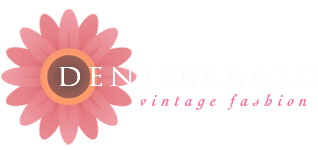This fabric term of the week allows me to highlight one aspect of the
VFG Fabric Resource, the contributions by Claire Schaeffer. If you don’t know of Claire’s work, here is the brief Amazon biography:
Claire Shaeffer is a respected author, lecturer, college instructor and columnist. She frequently contributes articles to sewing magazines, and has authored many books, including Sew Any Patch Pocket, Couture Sewing Techniques, Sew Any Fabric and The Complete Book of Sewing Shortcuts. Claire Shaeffer makes her home in Palm Springs, California.
Her
books are enjoyable reads, interesting, highly informative and skillfully researched. Claire is an expert on couture sewing techniques. To put it a little less dryly, she’s all over the place behind the seams!
 |
| A few of Claire Schaeffer’s most recent books |
I am acquainted with Claire Schaeffer through the Vintage Fashion Guild, of which she is a member, and when she offered a number of definitions from her Fabric Sewing Guide for use in the VFG Fabric Resource I certainly jumped at the chance. It was difficult taking all the best-known fabric resource materials and summarizing without copying. I felt like I was trying to reinvent the wheel. Claire’s succinct definitions, of which I used about 40, were (and are) a huge asset.
Shadow stripes
Subtle stripes created by weaving the stripes with the same-color yarn with a different twist, weave or with blended yarns slightly lighter or darker.
From Fabric Sewing Guide by Claire Schaeffer. Krause Publications, Cincinnati, 2008. Used by permission.
 |
©Vintage Fashion Guild - photo by Hoyt Carter
|
New in my webstore is a 1950s shirtwaist dress by Anne Fogarty, the fabric made of cotton with shadow stripes, as well as printing.
The front of the bodice is cut on the bias, so the shadow stripes make a flattering V. Tiny tucks on the vertical add to the visual interest. (Attention to detail—just one of the many reasons to love vintage clothing!)



























































